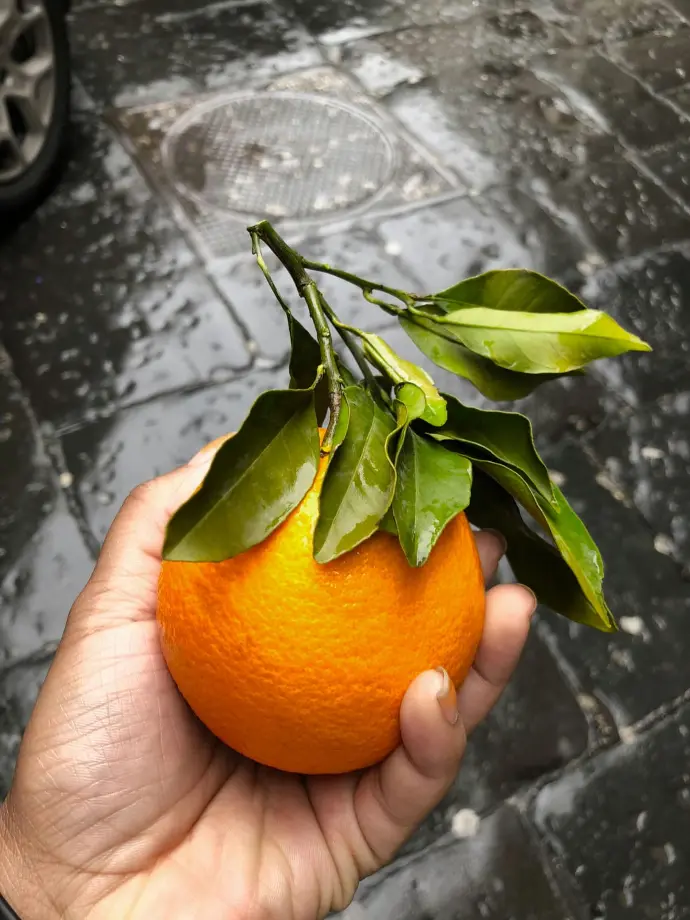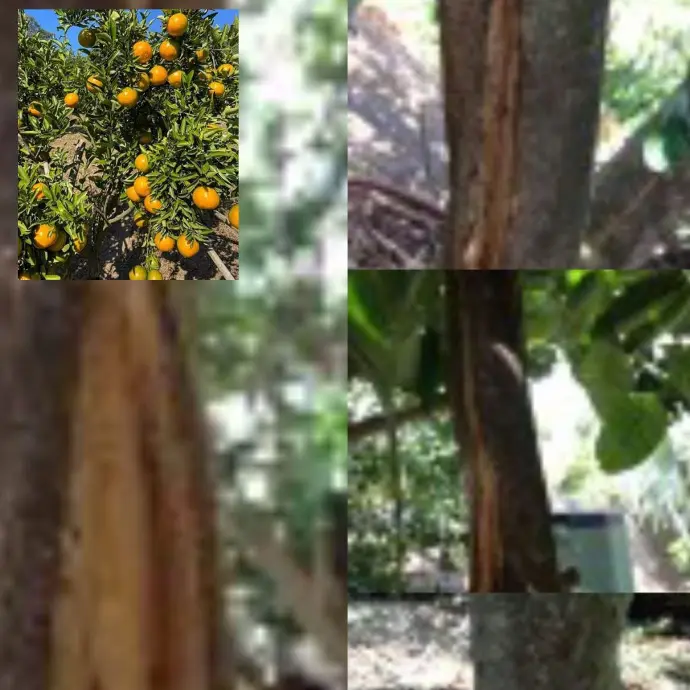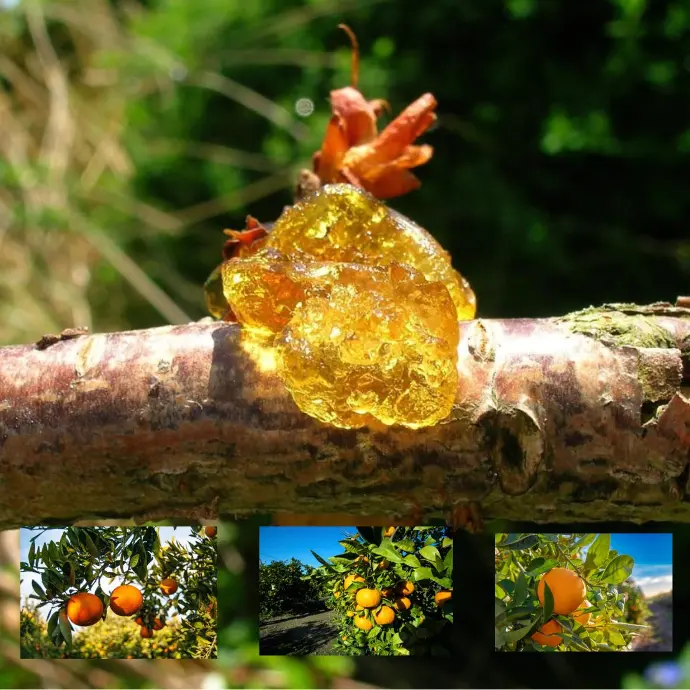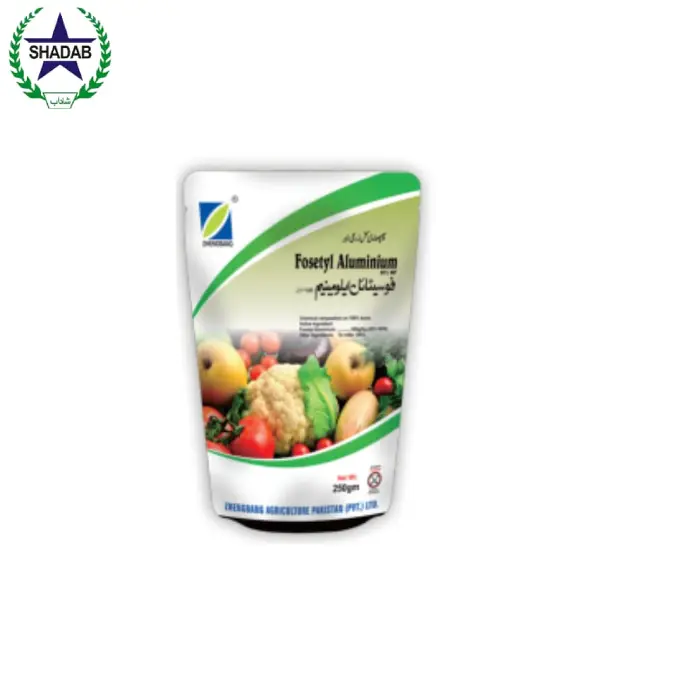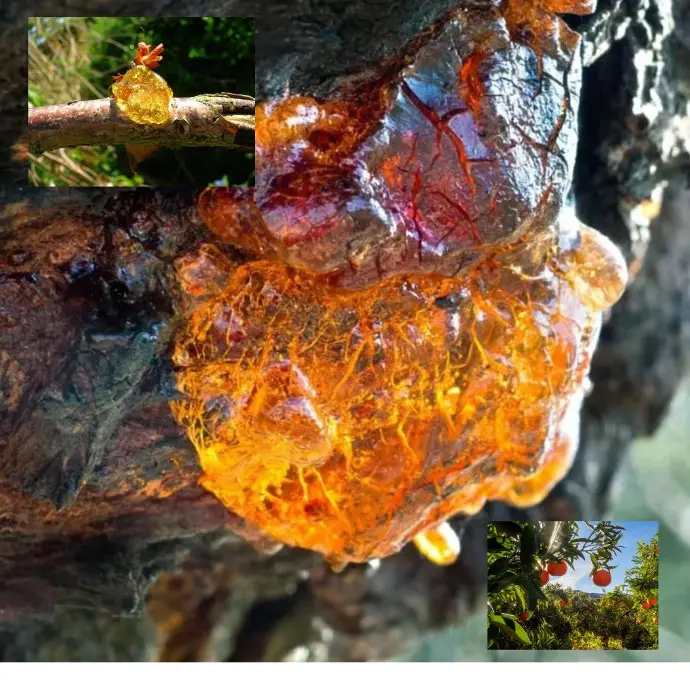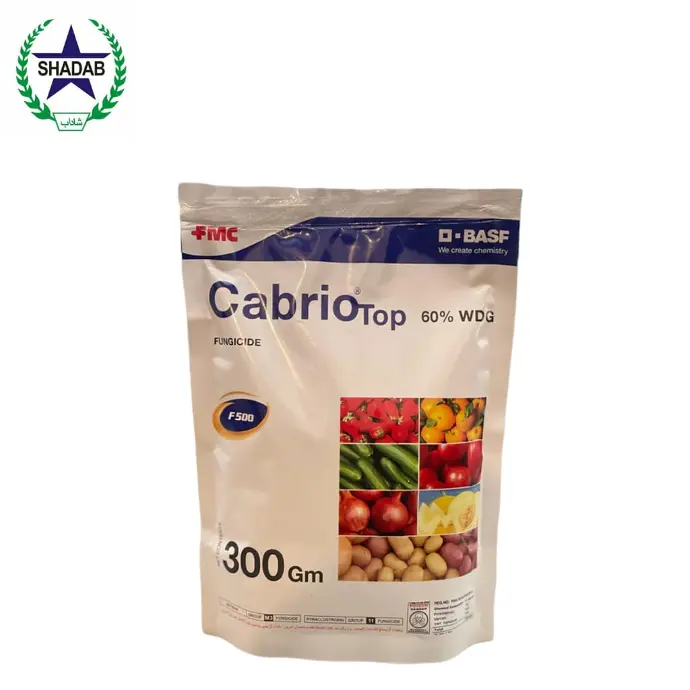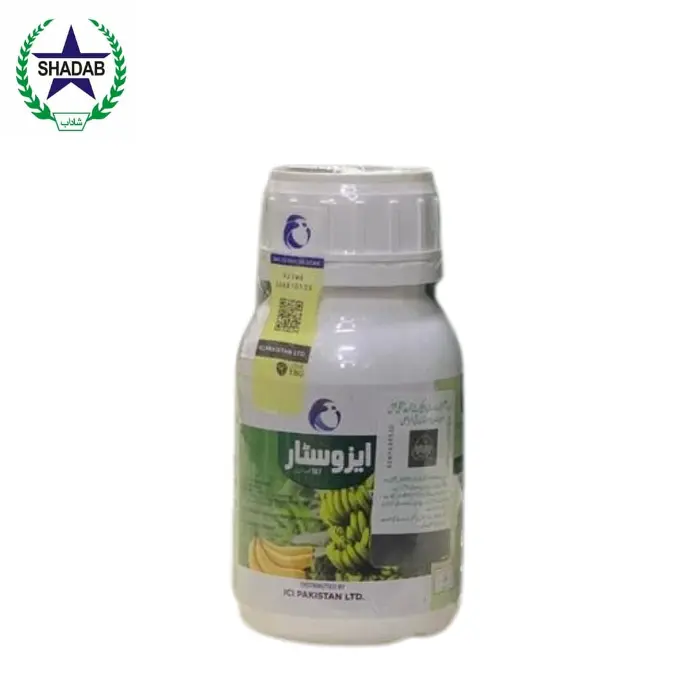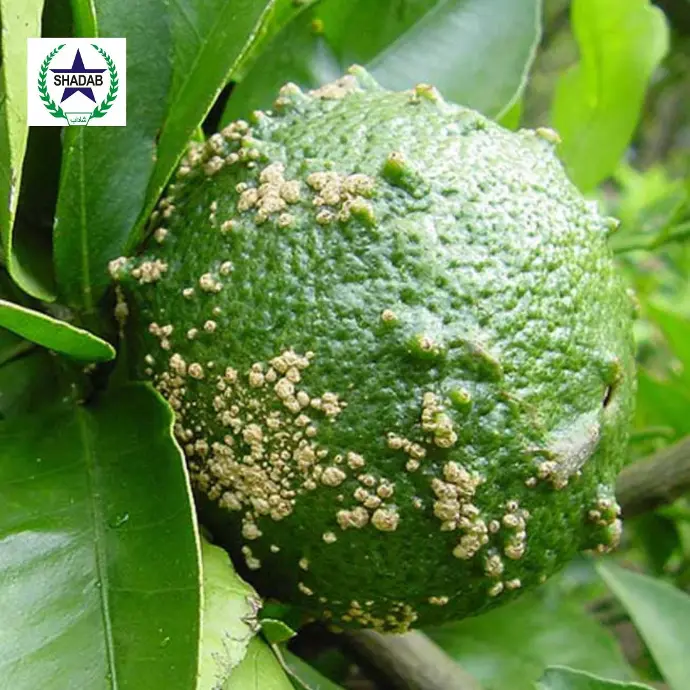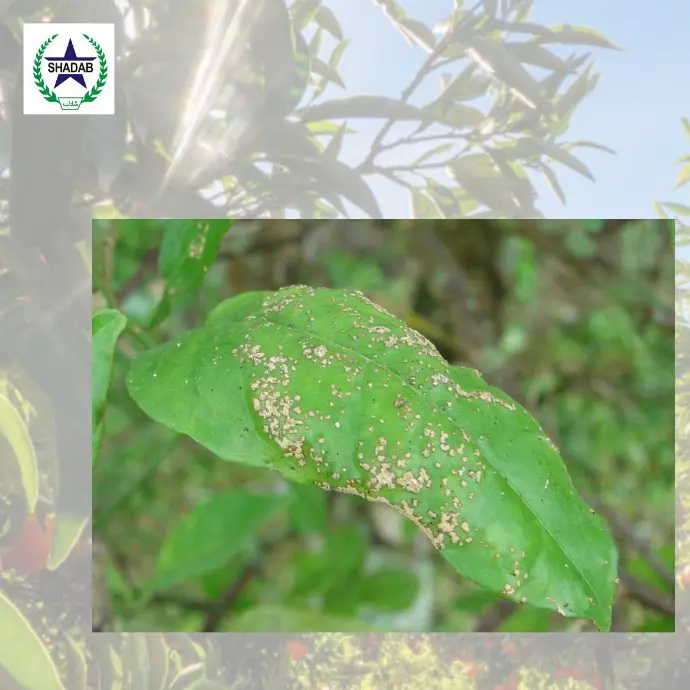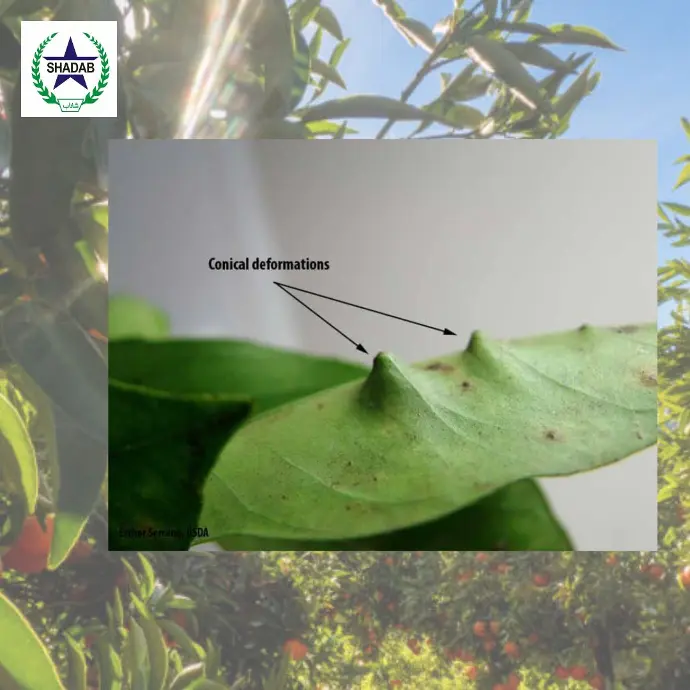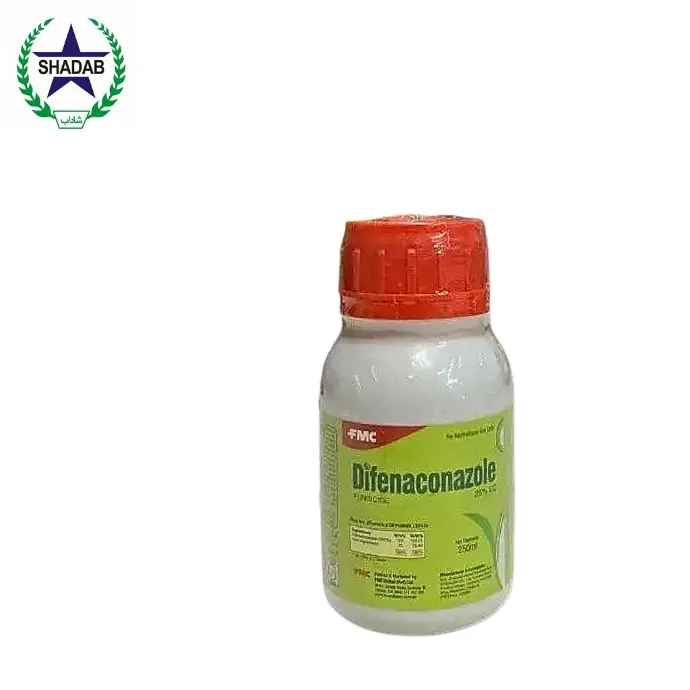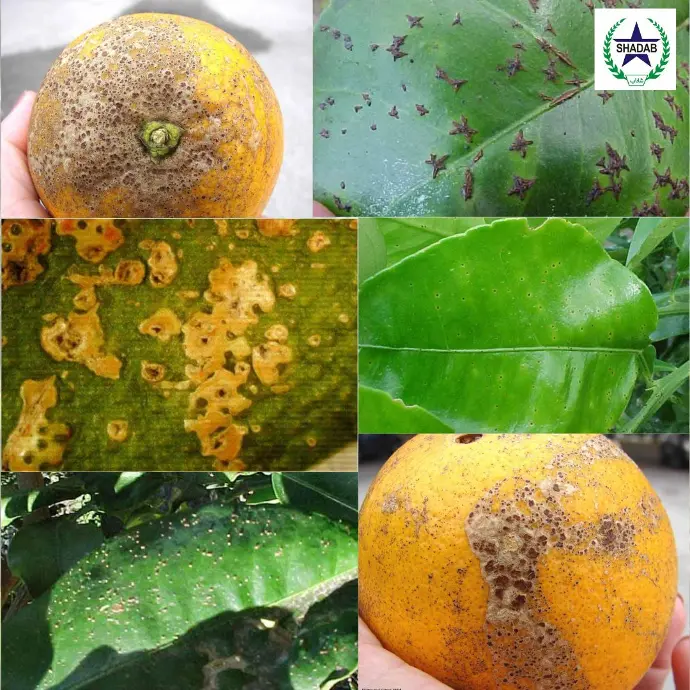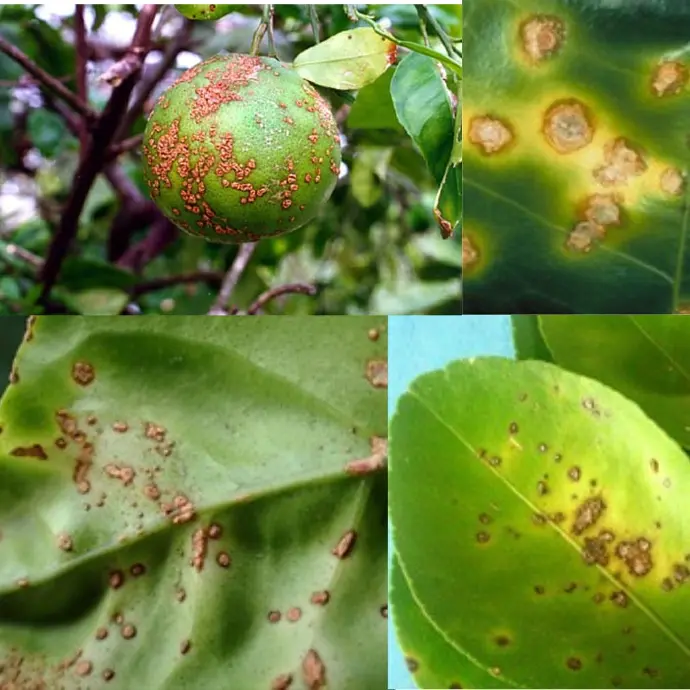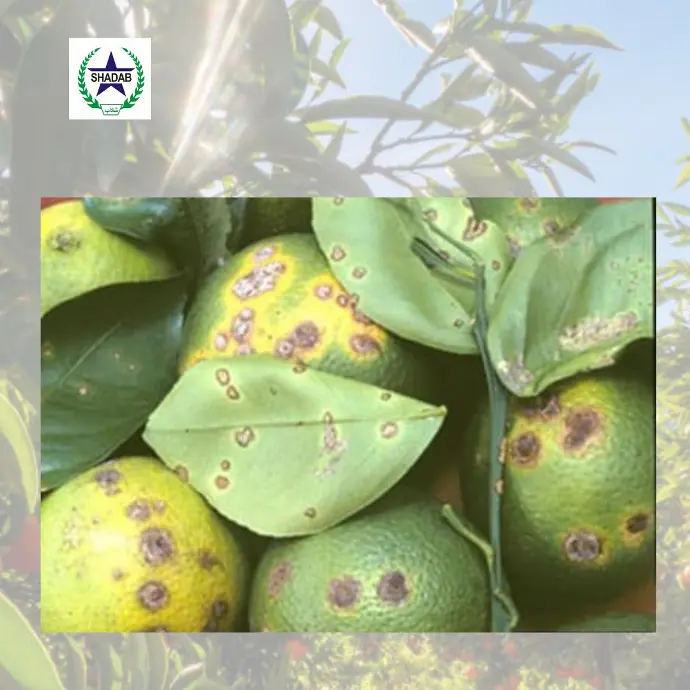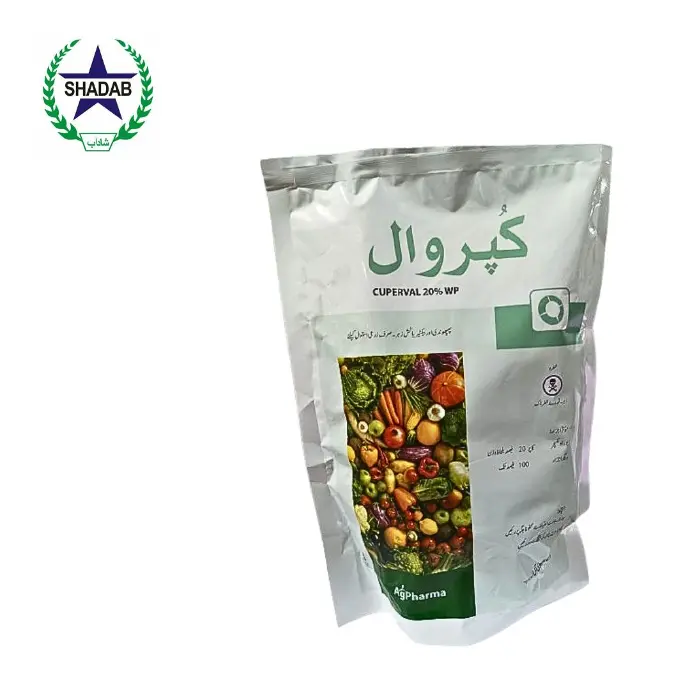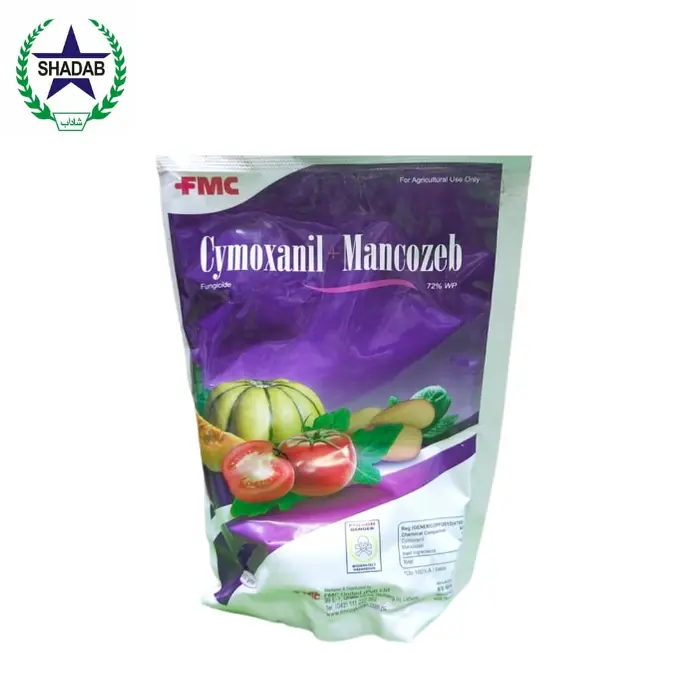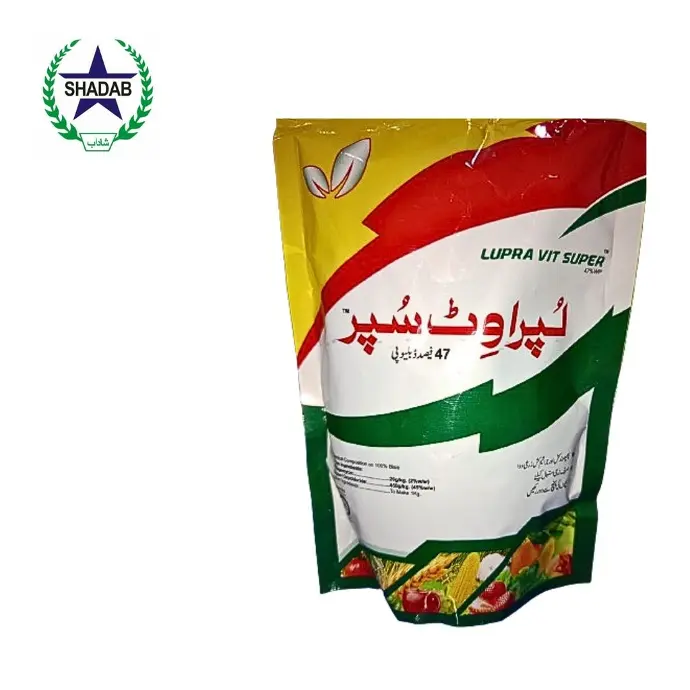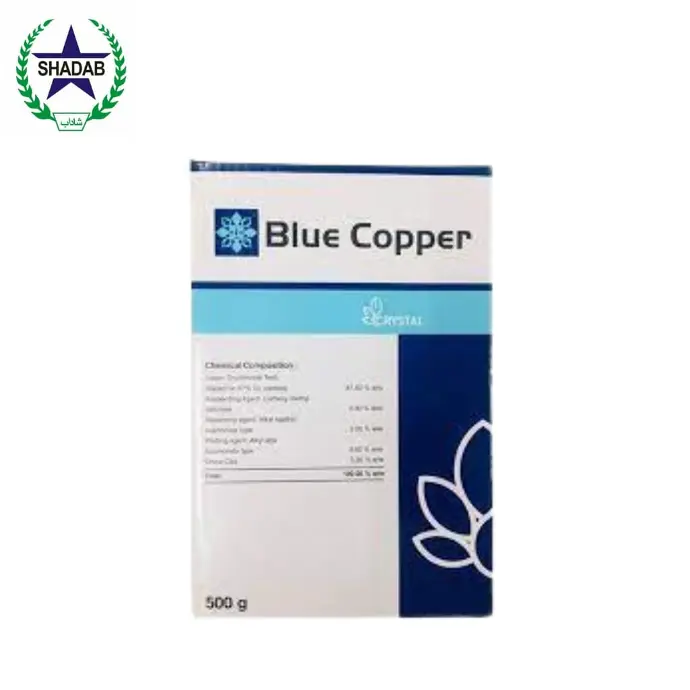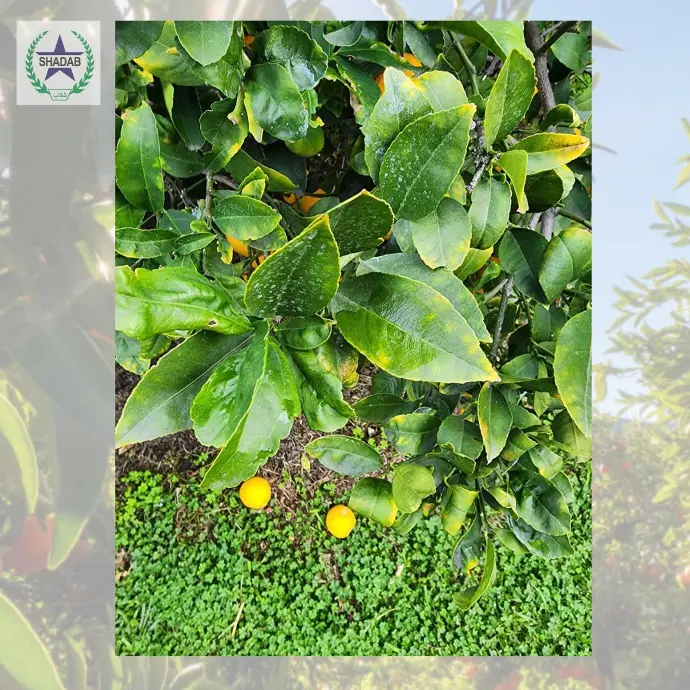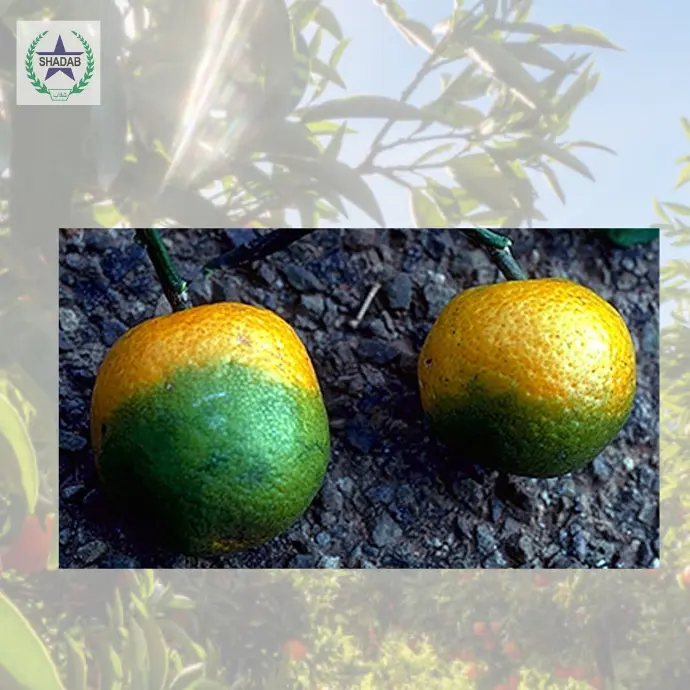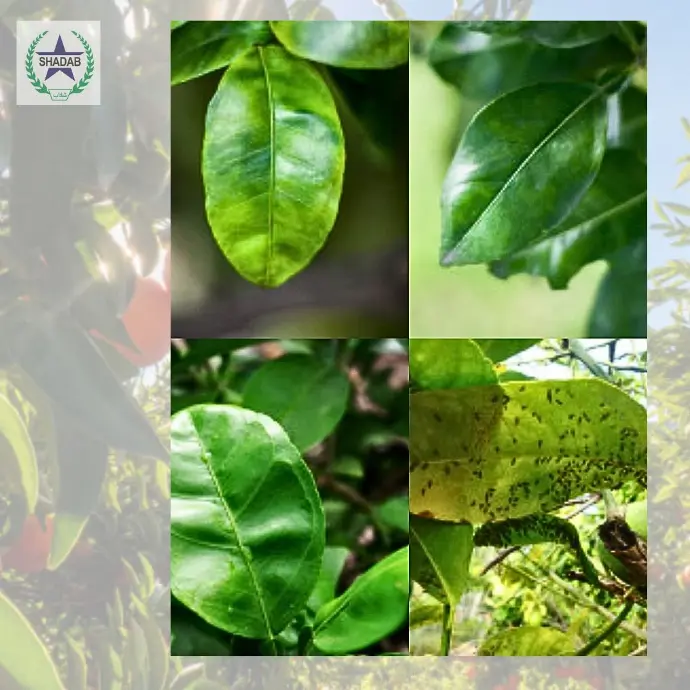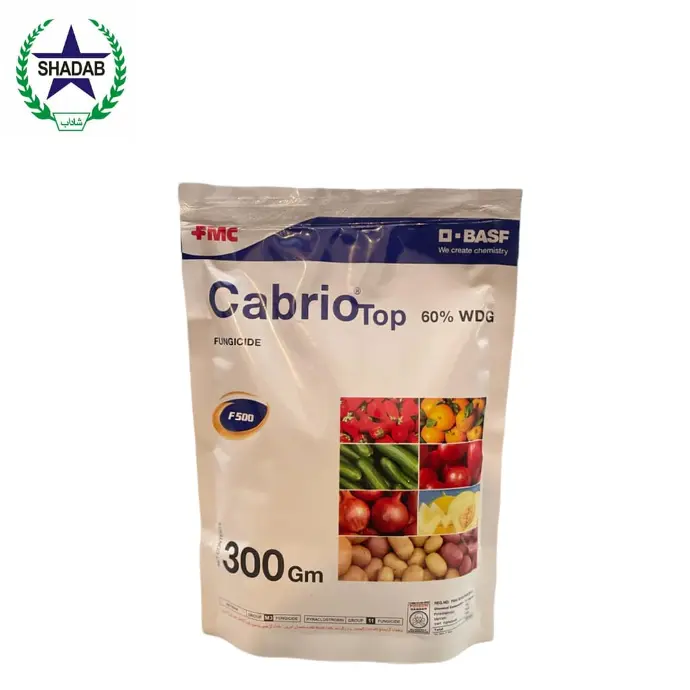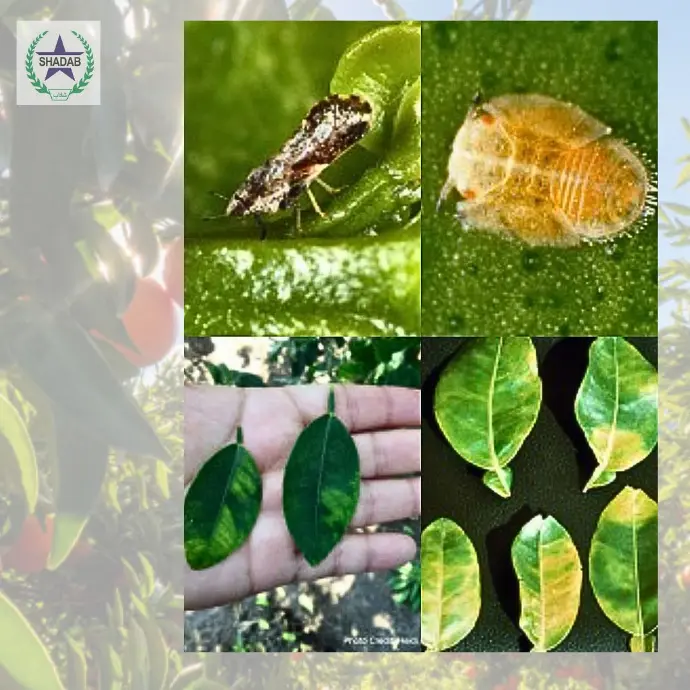Citrus Diseases & Management
Fertilizer Plan for Citrus
کھاد کی پہلی قسط میں 5 بیگ سنگل سپر فاسفیٹ 1بیگ ایس او پی 1بیگ ہیومیک ایسڈ ساتھ ہی جڑ مار نیماٹوڈز کے لیے 10کلو فیپرونل 10 کلو کلورنٹرانیلی پرول استعمال کر لیے جاہیں تا کہ پودے جڑ مار نیماٹوڈز سے محفوظ ہو جاہیں البتہ اگر کھاد کی پہلی قسط 15 فروری کے بعد دینی ہو تو 4 بیگ اینگرو این پی کے 15:15:15 +6 کلو سونا بوران یآ 2بیگ ڈی اے پی +1بیگ ایس او پی+6 کلو سونا بوران +2بیگ ایمونیم سلفیٹ یا ایمونیم نائٹریٹ یا 4 بیگ نایٹروفاس+1بیگ ایس او پی+ 6 کلو سونا بوران+2 بیگ ایمونیم سلفیٹ یا ایمونیم نائٹریٹ یا5 بیگ سنگل سپر فاسفیٹ + 1بیگ ایس او پی + 6کلو سونا بوران 3 بیگ امونیم سلفیٹ یا3 بیگ امونیم نائٹریٹ ڈال دی جاے
اور جڑ فنگس سے بچاؤ کے لیے فی ایکڑ2کلو میٹالکسل مینکوزیب یا1 کلو فوسیٹاہیل امونیم یا 1 کلو سایموکسنل مینکوزیب تو 5-7 ماہ کے لیے باغ جڑ مار فنگس سے محفوظ رہے گا انتھرکنوز سے بچاؤ کے لیے فی ایکڑ سپرے میں
750 گرام کاپر اکسی کلورائیڈ یا 500گرام ایف ایم سی کی کوسایڈ یاشاہن 500 گرام یا اییر ون 360 ملی لیٹر یا کپروال400 گرام ہمراہ 2 کلو یوریا استعمال کرنے سے اینتھرکنوز سے بچاؤ ممکن ہے
1. Gummosis and bark splitting
Gummosis and Bark Spitting are indicative of several symptoms, including the presence of gumming, decayed roots, and fissures in the bark. When the bark at the soil line becomes saturated, it may exhibit a reddish-brown to black coloration. Additionally, discoloration of the tissue in the lower trunk, along with yellowing and wilting of leave can lead to the demise of the tree. Excessively moist soil conditions facilitate the growth and spread of zoospores, which can exacerbate these issues.Effective disease management necessitates careful attention to irrigation practices and the enhancement of drainage systems. It is essential to plant trees at a depth where the soil merely covers the roots of the first lateral branches, ensuring optimal growth conditions. For instance, planting at a height of approximately nine inches can promote healthy development and reduce the risk of disease.
گوموسس اور چھال کا پھٹا ہونا کئی علامات کی نشاندہی کرتا ہے، بشمول درختوں کی رال کی موجودگی، بوسیدہ جڑیں، اور چھال میں دراڑ۔ جب مٹی کی لکیر پر چھال سیر ہو جاتی ہے، تو یہ سرخی مائل بھوری سے سیاہ رنگت کی نمائش کر سکتی ہے۔ مزید برآں، نچلے تنے میں پودے کے بافتوں کی رنگت، پتوں کے زرد اور مرجھانے کے ساتھ درخت کے مرنے کا باعث بن سکتے ہیں۔ ضرورت سے زیادہ نم مٹی کے حالات اس کی نشوونما اور پھیلاؤ کو آسان بناتے ہیں۔
فنگس کے انڈے بیضہ، جو ان مسائل کو بڑھا سکتے ہیں۔ بیماری کے مؤثر انتظام کے لیے آبپاشی کے طریقوں اور نکاسی آب کے نظام کو بہتر بنانے پر محتاط توجہ دینے کی ضرورت ہے۔ درختوں کو اس گہرائی میں لگانا ضروری ہے جہاں مٹی صرف پہلی پس منظر کی شاخوں کی جڑوں کو ڈھانپتی ہو، جس سے نشوونما کے بہترین حالات کو یقینی بنایا جا سکے۔ مثال کے طور پر، تقریباً نو انچ کی اونچائی پر پودے لگانے سے صحت مند نشوونما اور بیماری کے خطرے کو کم کیا جا سکتا ہے۔
Management of Citrus Gummosis and Bark Splitting
Proper management and maintenance of trees to prevent gummosis involves addressing potential threats from insects and rodents that may inflict harm. It is essential to remove any parts of the tree that show signs of disease. Additionally, it is crucial to sanitize cutting tools between uses by applying a solution of 10% bleach to prevent the spread of pathogens.Effective control measures include selecting resistant tree varieties, ensuring proper site drainage, and taking steps to minimize injury to the plants. The first preventive treatment should be administered in February, utilizing a mixture of azoxystrobin and chlorothalonil at a concentration of 150 ml per 100 liters of water. Following this, a two-month preventive spray in March should incorporate 75% Tebuconazole at 45 g per 100 liters of water. In cases of infestation, the Cabrio Top FMC product can be employed, mixing 50% azoxystrobin and tebuconazole at 65 milliliters in 100 liters of water. The third preventive spray in September should consist of a formulation containing 32.5% Azoxystrobin and Difenaconazole at 100 ml per 100 liters of water.In terms of chemical regulation, specific treatments can be employed to mitigate the effects of gummosis and bark splitting. A solution containing 3 grams of copper per liter of water, along with 2.5 grams of Fosetyl-AL and 2.5 grams of Metalaxyl Mancozeb per liter of Water can be effective in addressing these symptoms. Implementing these strategies will contribute to the overall health and resilience of the trees.
گوموسس کو روکنے کے لیے درختوں کے مناسب انتظام اور دیکھ بھال میں کیڑوں اور چوہوں کے ممکنہ خطرات سے نمٹنا شامل ہے جو نقصان پہنچا سکتے ہیں۔ یہ ضروری ہے کہ درخت کے کسی بھی حصے کو ہٹا دیا جائے جو بیماری کی علامات ظاہر کرتے ہیں۔ مزید برآں، پیتھوجینز کے پھیلاؤ کو روکنے کے لیے 10% بلیچ کے محلول کو استعمال کرتے ہوئے کٹنگ ٹولز کو جراثیم سے پاک کرنا بہت ضروری ہے جن میں درختوں کی مزاحمتی اقسام کا انتخاب، مناسب جگہ کی نکاسی کو یقینی بنانا، اور پودوں کو پہنچنے والے نقصان کو کم سے کم کرنے کے لیے اقدامات کرنا شامل ہیں۔ 150 ملی لیٹر فی 100 لیٹر پانی کے ارتکاز میں azoxystrobin اور chlorothalonil کے مرکب کو استعمال کرتے ہوئے پہلا حفاظتی علاج فروری میں کروایا جانا چاہیے۔ اس کے بعد مارچ میں دو ماہ کے احتیاطی سپرے میں 75% ٹیبوکونازول 45 گرام فی 100 لیٹر پانی میں شامل کیا جانا چاہیے۔ انفیکشن کی صورت میں، Cabrio Top FMC پروڈکٹ کو استعمال کیا جا سکتا ہے، 50% azoxystrobin اور tebuconazole کو 100 لیٹر پانی میں 65 ملی لیٹر پر ملا کر۔ ستمبر میں ہونے والا تیسرا احتیاطی سپرے 32.5% Azoxystrobin اور Difenaconazole پر مشتمل ہونا چاہئے جس میں 100 ملی لیٹر فی 100 لیٹر پانی شامل ہو، کیمیائی ضابطے کے لحاظ سے، گوموسس اور چھال کے پھٹنے کے اثرات کو کم کرنے کے لیے مخصوص علاج کا استعمال کیا جا سکتا ہے۔ 3 گرام کاپر فی لیٹر پانی پر مشتمل محلول، 2.5 گرام Fosetyl-AL اور 2.5 گرام Metalaxyl کو Mancozeb فی لیٹر پانی کے ساتھ ملا کر ان علامات کو دور کرنے میں مؤثر ثابت ہو سکتا ہے۔ ان حکمت عملیوں کو نافذ کرنے سے درختوں کی مجموعی صحت اور لچک میں مدد ملے گی۔
2. Citrus Scab
Citrus scab is a disease that affects the fruit, leaves, and twigs of citrus plants, leading to the formation of irregular, slightly elevated scab-like or wart-like lesions. Initially, these scabs appear in shades of grey or pink, but they darken as they mature. This condition is particularly prevalent on lemon fruits, as opposed to the leaves.The raised lesions characteristic of citrus scab may be mistaken for symptoms resulting from botrytis infection or abrasions caused by wind rubbing. It is essential for growers to accurately identify these symptoms to implement appropriate management strategies and mitigate the impact of this disease on their crops.
کینو کی خارش ایک بیماری ہے جو کھٹی پودوں کے پھلوں، پتوں اور ٹہنیوں کو متاثر کرتی ہے، جس سے فاسد، قدرے اونچے کھرنڈ نما یا مسے جیسے گھاووں کی تشکیل ہوتی ہے۔ ابتدائی طور پر، یہ خارش سرمئی یا گلابی رنگوں میں نمودار ہوتی ہے، لیکن پختہ ہونے کے ساتھ ساتھ یہ گہرے ہوتے ہیں۔ یہ حالت خاص طور پر لیموں کے پھلوں پر پائی جاتی ہے، جیسا کہ پتوں کے برعکس ہوتا ہے۔ لیموں کی کھجلی کے بڑھے ہوئے گھاووں کو بوٹریائٹس کے انفیکشن یا ہوا کے رگڑنے سے ہونے والی رگڑنے کے نتیجے میں ہونے والی علامات کے لیے غلطی سے سمجھا جا سکتا ہے۔ کاشتکاروں کے لیے یہ ضروری ہے کہ وہ مناسب انتظامی حکمت عملیوں کو نافذ کرنے اور اپنی فصلوں پر اس بیماری کے اثرات کو کم کرنے کے لیے ان علامات کی درست نشاندہی کریں۔
Management of Citrus Scab:
Control measures involve the removal and destruction of any infected branches, fruits, and leaves. The application of lime, copper sulfate, or Bordeaux mixture is highly effective when administered prior to the onset of spring and monsoon seasons. The initial preventive spray should be conducted in February, utilizing a mixture of azoxystrobin and chlorothalonil at a concentration of 56% at 150 milliliters per 100 liters of water. In March, a second preventive spray should be applied, consisting of Tebuconazole at 75% concentration at 45 grams per 100 liters of water, combined with trifloxystrobin. Should an infestation occur, it is recommended to mix Tebuconazole and Azoxystrobin at a ratio of 50% in 65 milliliters of water. The third preventive spray is to be carried out in September, employing a combination of Azoxystrobin and Difenaconazole at 32.5% concentration at 100 milliliters per 100 liters of water.You can also use profenoconazole.
کنٹرول کے اقدامات میں کسی بھی متاثرہ شاخوں، پھلوں اور پتوں کو ہٹانا اور تباہ کرنا شامل ہے۔ چونے، کاپر سلفیٹ، یا بورڈو مکسچر کا استعمال انتہائی مؤثر ہے جب موسم بہار اور مون سون کے موسموں کے آغاز سے پہلے دیا جائے۔ ابتدائی حفاظتی سپرے فروری میں کیا جانا چاہیے، azoxystrobin اور chlorothalonil کے مرکب کو 56% کے ارتکاز میں 150 ملی لیٹر فی 100 لیٹر پانی میں استعمال کریں۔ مارچ میں، دوسرا حفاظتی سپرے لگایا جانا چاہیے، جس میں ٹیبوکونازول 75 فیصد ارتکاز پر 45 گرام فی 100 لیٹر پانی، ٹرائی فلوکسیسٹروبین کے ساتھ ملا کر استعمال کیا جائے۔ اگر کوئی انفیکشن ہو تو، یہ تجویز کی جاتی ہے کہ Tebuconazole اور Azoxystrobin کو 50% کے تناسب سے 65 ملی لیٹر پانی میں ملا دیں۔ تیسرا حفاظتی سپرے ستمبر میں کیا جانا ہے، جس میں Azoxystrobin اور Difenaconazole کے مرکب کو 32.5% ارتکاز پر 100 ملی لیٹر فی 100 لیٹر پانی میں استعمال کیا جائے گا۔ آپ profenoconazole بھی استعمال کر سکتے ہیں۔
3.Citrus Melanose
Citrus Melanose is characterized by distinct symptoms that manifest on the leaves. The initial indicators include small, round lesions that exhibit dark depressions surrounded by yellow borders. As the condition progresses, these spots darken to a brown hue and become raised, leading to premature leaf drop and yellowing. The fruit is also affected, presenpresent with small, sunken spots that start as light brown but develop into dark, elevated patches as the disease advances. When multiple spots are closely spaced, they may merge, resulting in a rough and uneven texture on the fruit's surface.The impact of Citrus Melanose is often exacerbated by environmental conditions, particularly following a freeze or during periods of heavy rainfall in the spring. While the lesions primarily affect the leaves and fruit, they can also be observed on twigs that are in decline. Typically, the damage to the fruit remains superficial, but the overall health of the plant can be significantly compromised if the disease is not managed effectively.To control the spread of Melanose and related scab diseases, a comprehensive management strategy is essential. This includes maintaining cleanliness in the orchard, careful irrigation practices, and avoiding intercropping.
سٹرس میلانوز کی خصوصیت مختلف علامات سے ہوتی ہے جو پتوں پر ظاہر ہوتی ہیں۔ ابتدائی اشارے میں چھوٹے، گول گھاو شامل ہیں جو پیلے رنگ کی سرحدوں سے گھرے ہوئے گہرے افسردگی کو ظاہر کرتے ہیں۔ جوں جوں حالت بڑھتی ہے، یہ دھبے سیاہ ہو کر بھوری رنگت میں تبدیل ہو جاتے ہیں اور ابھرتے ہیں، جس سے پتے وقت سے پہلے گر جاتے ہیں اور پیلے پڑ جاتے ہیں۔ پھل بھی متاثر ہوتا ہے، چھوٹے، دھنسے ہوئے دھبوں کے ساتھ موجود ہوتے ہیں جو ہلکے بھورے رنگ سے شروع ہوتے ہیں لیکن بیماری کے بڑھنے کے ساتھ ساتھ گہرے، اونچے دھبوں میں تبدیل ہو جاتے ہیں۔ جب ایک سے زیادہ دھبے قریب سے فاصلہ رکھتے ہیں، تو وہ آپس میں مل سکتے ہیں، جس کے نتیجے میں پھل کی سطح پر کھردری اور ناہموار ساخت بن جاتی ہے، خاص طور پر موسم بہار میں جمنے کے بعد یا شدید بارش کے دوران سائٹرس میلانوز کا اثر اکثر بڑھ جاتا ہے۔ جب کہ کیڑے بنیادی طور پر پتوں اور پھلوں کو متاثر کرتے ہیں، وہ ان ٹہنیوں پر بھی دیکھے جا سکتے ہیں جو زوال میں ہیں۔ عام طور پر، پھل کو پہنچنے والا نقصان سطحی رہتا ہے، لیکن اگر بیماری کا مؤثر طریقے سے انتظام نہ کیا جائے تو پودوں کی مجموعی صحت کو نقصان پہنچ سکتا ہے۔ اس میں باغ میں صفائی کو برقرار رکھنا، آبپاشی کے محتاط طریقے، اور بین فصلوں سے گریز کرنا شامل ہے۔
Management of Citrus Melanose:
A recommended approach involves three applications of fungicides: the first spray should utilize copper-based fungicides at a concentration of 3 grams per liter of water before blooming; the second spray should combine Difenoconazole and Azoxystrobin at a rate of 1 milliliter per liter of water; and the final spray, applied during the monsoon season, should Again, use copper-based fungicides at the same concentration as the first application.
ایک تجویز کردہ نقطہ نظر میں فنگسائڈس کے تین استعمال شامل ہیں: پہلے سپرے میں کھلنے سے پہلے 3 گرام فی لیٹر پانی کے ارتکاز میں تانبے پر مبنی فنگسائڈس کا استعمال کرنا چاہیے۔ دوسرا سپرے Difenoconazole اور Azoxystrobin کو 1 ملی لیٹر فی لیٹر پانی کی شرح سے ملایا جائے۔ اور آخری سپرے، جو مانسون کے موسم میں لگایا جاتا ہے، دوبارہ، تانبے پر مبنی فنگسائڈز کا استعمال اسی ارتکاز میں کرنا چاہیے جیسا کہ پہلی بار استعمال کیا گیا تھا۔
4. Citrus Canker
Citrus Canker manifests through distinct symptoms, particularly noticeable on young lesions that appear raised on both surfaces of the leaves, with a greater prevalence on the lower side. Over time, these pustules develop into corky, crater-like formations characterized by elevated edges, depressed centers, and a surrounding yellow halo. The lesions on fruit exhibit variability in size due to the rind's prolonged susceptibility, allowing for multiple infection cycles to occur. Infections on twigs and stems mirror those found on fruit, presenting raised, corky lesions that facilitate the long-term survival of the causative bacterium. Major outbreaks of citrus canker typically coincide with the emergence of new shoots or the early developmental stages of fruit.While citrus Canker is primarily regarded as a cosmetic issue; it can lead to more severe consequences under optimal infection conditions, resulting in defoliation, die-back of shoots, and premature fruit drop.
کینکر الگ الگ علامات کے ذریعے ظاہر ہوتا ہے، خاص طور پر نوجوان گھاووں پر جو پتوں کی دونوں سطحوں پر ابھرے ہوئے دکھائی دیتے ہیں، نچلے حصے میں زیادہ پھیلتے ہیں۔ وقت گزرنے کے ساتھ، یہ پسٹولز کارکی، گڑھے جیسی شکلوں میں نشوونما پاتے ہیں جن کی خصوصیات بلند کناروں، افسردہ مراکز، اور ارد گرد پیلے رنگ کے ہالہ سے ہوتی ہے۔ پھلوں پر گھاووں کی وجہ سے چھلکے کی طویل حساسیت کی وجہ سے سائز میں تغیر ظاہر ہوتا ہے، جس سے انفیکشن کے متعدد چکر لگ سکتے ہیں۔ ٹہنیوں اور تنے پر انفیکشن پھلوں پر پائے جانے والے انفیکشن کی عکاسی کرتے ہیں، جو ابھرے ہوئے، کارکی گھاووں کو پیش کرتے ہیں جو کارآمد بیکٹیریم کی طویل مدتی بقا میں سہولت فراہم کرتے ہیں۔ کے بڑے پھیلاؤ عام طور پر نئی ٹہنیوں کے ابھرنے یا پھل کے ابتدائی نشوونما کے مراحل کے ساتھ موافق ہوتے ہیں۔ یہ انفیکشن کی زیادہ سے زیادہ حالتوں میں زیادہ سنگین نتائج کا باعث بن سکتا ہے، جس کے نتیجے میں پتے گرنا، ٹہنیاں مرنا، اور قبل از وقت پھل گرنا۔
Management of Citrus Canker:
Effective management of this disease begins with exclusion, which serves as the first line of defense. Sanitation practices are crucial, as many new cases of citrus canker are attributed to human and mechanical transmission, underscoring the importance of maintaining clean environments to prevent the spread of the disease.Once citrus canker has been introduced to an area, the most widely accepted method of eradication involves the removal and destruction of infected and exposed trees to eliminate the source of inoculum. Chemical control measures are also employed, beginning with a Bordeaux mixture (1%) applied after fruit harvest, followed by a second application of Copper Oxychloride at a concentration of 3 g/liter of water in April. A third treatment using Copper Hydroxide at 2.5 g/liter of water is recommended during the months of July and August to further manage the disease effectively.Control measures include the application of the Bordeaux mixture and the Cuperval product, along with copper oxychloride, commonly known as the Blue Copper Product. The Lupravit Super product may also be utilized to eliminate disease from the affected area. It is essential to remove and dispose of any infected twigs, fruits, and leaves. Additionally, applying Bordeaux paste to the twigs and branches is recommended. A solution can be prepared using 125 grams of copper oxychloride combined with 47% kasugamycin in 100 liters of water.
اس بیماری کا مؤثر انتظام اخراج سے شروع ہوتا ہے، جو دفاع کی پہلی لائن کے طور پر کام کرتا ہے۔ صفائی ستھرائی کے طریقے بہت اہم ہیں، کیونکہ لیموں کے ناسور کے بہت سے نئے کیسز کی وجہ انسانی اور مکینیکل ٹرانسمیشن ہے، جس سے بیماری کے پھیلاؤ کو روکنے کے لیے صاف ماحول کو برقرار رکھنے کی اہمیت پر زور دیا جاتا ہے۔ انوکولم کے ماخذ کو ختم کرنے کے لیے متاثرہ اور بے نقاب درختوں کو ہٹانا اور تباہ کرنا شامل ہے۔ کیمیاوی کنٹرول کے اقدامات بھی استعمال کیے جاتے ہیں، جس کی شروعات پھلوں کی کٹائی کے بعد بورڈو مکسچر (1%) سے کی جاتی ہے، اس کے بعد اپریل میں 3 جی فی لیٹر پانی کے ارتکاز پر کاپر آکسی کلورائیڈ کا دوسرا استعمال ہوتا ہے۔ جولائی اور اگست کے مہینوں میں کاپر ہائیڈرو آکسائیڈ کا استعمال کرتے ہوئے تیسرا علاج تجویز کیا جاتا ہے تاکہ بیماری کو مزید مؤثر طریقے سے کنٹرول کیا جا سکے جس میں کاپر آکسی کلورائیڈ کے ساتھ بورڈو مکسچر اور کپروال پروڈکٹ کا استعمال شامل ہے۔ بلیو کاپر پروڈکٹ کے طور پر۔ Lupravit سپر پروڈکٹ کو متاثرہ علاقے سے بیماری کو ختم کرنے کے لیے بھی استعمال کیا جا سکتا ہے۔ کسی بھی متاثرہ ٹہنیوں، پھلوں اور پتوں کو ہٹانا اور ٹھکانے لگانا ضروری ہے۔ مزید برآں، ٹہنیوں اور شاخوں پر بورڈو پیسٹ لگانے کی سفارش کی جاتی ہے۔ 100 لیٹر پانی میں 125 گرام کاپر آکسی کلورائیڈ 47 فیصد کاسوگامائسن کے ساتھ ملا کر ایک محلول تیار کیا جا سکتا ہے۔
5. Citrus greening disease
Citrus Greening Disease, also known as Huanglongbing (HLB), presents several distinct symptoms that can significantly affect citrus crops. One notable indicator is the greening observed at the stylar end of infected fruits, which deviates from the typical orange hue. Infected fruits exhibit a sterile end greening, contrasting sharply with healthy fruits, which maintain their normal coloration. Additionally, mottled leaves are a prevalent symptom, characterized by a combination of leaf mottling and overall chlorosis, indicating a decline in plant health.Another consequence of HLB is the abortion of seeds within the fruit of infected sweets orange trees. This phenomenon is evident when comparing the small, purple seeds that emerge from diseased fruits to the standard seeds found in healthy fruits. Such seed abortion is a common manifestation of chronic diseases affecting citrus plants, further complicating the reproductive success of these trees.
ہریالی کی بیماری، جسے ہوانگ لونگ بنگ بھی کہا جاتا ہے، کئی الگ الگ علامات پیش کرتا ہے جو کھٹی فصلوں کو نمایاں طور پر متاثر کر سکتا ہے۔ ایک قابل ذکر اشارے متاثرہ پھلوں کے اسٹائلر سرے پر نظر آنے والی سبزی ہے، جو عام نارنجی رنگت سے ہٹ جاتی ہے۔ متاثرہ پھل ایک جراثیم سے پاک سبزی کو ظاہر کرتے ہیں، جو صحت مند پھلوں کے ساتھ تیزی سے متضاد ہوتے ہیں، جو اپنی عام رنگت کو برقرار رکھتے ہیں۔ مزید برآں، دبیز پتے ایک مروجہ علامت ہیں، جس کی خصوصیت پتوں کی دھندلاہٹ اور مجموعی طور پر کلوروسس کے امتزاج سے ہوتی ہے، جو پودوں کی صحت میں کمی کی نشاندہی کرتی ہے۔ بیماری والے پھلوں سے نکلنے والے چھوٹے، جامنی رنگ کے بیجوں کا صحت مند پھلوں میں پائے جانے والے معیاری بیجوں سے موازنہ کرتے وقت یہ رجحان واضح ہوتا ہے۔ اس طرح کے بیجوں کا اسقاط حمل لیموں کے پودوں کو متاثر کرنے والی دائمی بیماریوں کا ایک عام مظہر ہے، جو ان درختوں کی تولیدی کامیابی کو مزید پیچیدہ بناتا ہے۔
Management of Citrus Greening Disease:
To manage the spread of citrus greening, it is essential to remove diseased trees promptly. Effective control of the vectors responsible for transmitting the disease, particularly the citrus psylla, can be achieved by applying a solution of 1 milliliter of Novastar or Confidar per liter of water. This proactive approach is crucial in mitigating the impact of HLB on citrus production and Preserving the health of remaining trees also uses disease-free planting material.You can also use cabrio top, fosetyl aluminium and sulfonil of agpharma company.
کنو کی ہریالی کے پھیلاؤ کو روکنے کے لیے، بیمار درختوں کو فوری طور پر ہٹانا ضروری ہے۔ بیماری کی منتقلی کے لیے ذمہ دار ویکٹرز، خاص طور پر سٹرس سائلا، پر موثر کنٹرول نوواسٹار یا کنفیڈر کے 1 ملی لیٹر کے محلول کو فی لیٹر پانی میں ڈال کر حاصل کیا جا سکتا ہے۔ لیموں کی پیداوار پر HLB کے اثرات کو کم کرنے اور بقیہ درختوں کی صحت کے تحفظ کے لیے یہ فعال نقطہ نظر بیماری سے پاک پودے لگانے کے مواد کا بھی استعمال کرتا ہے۔
